The NSYSU's made-in-Taiwan mini submersible succeeds in being driven from within the cabin and breaks the record in underwater navigation in Taiwan
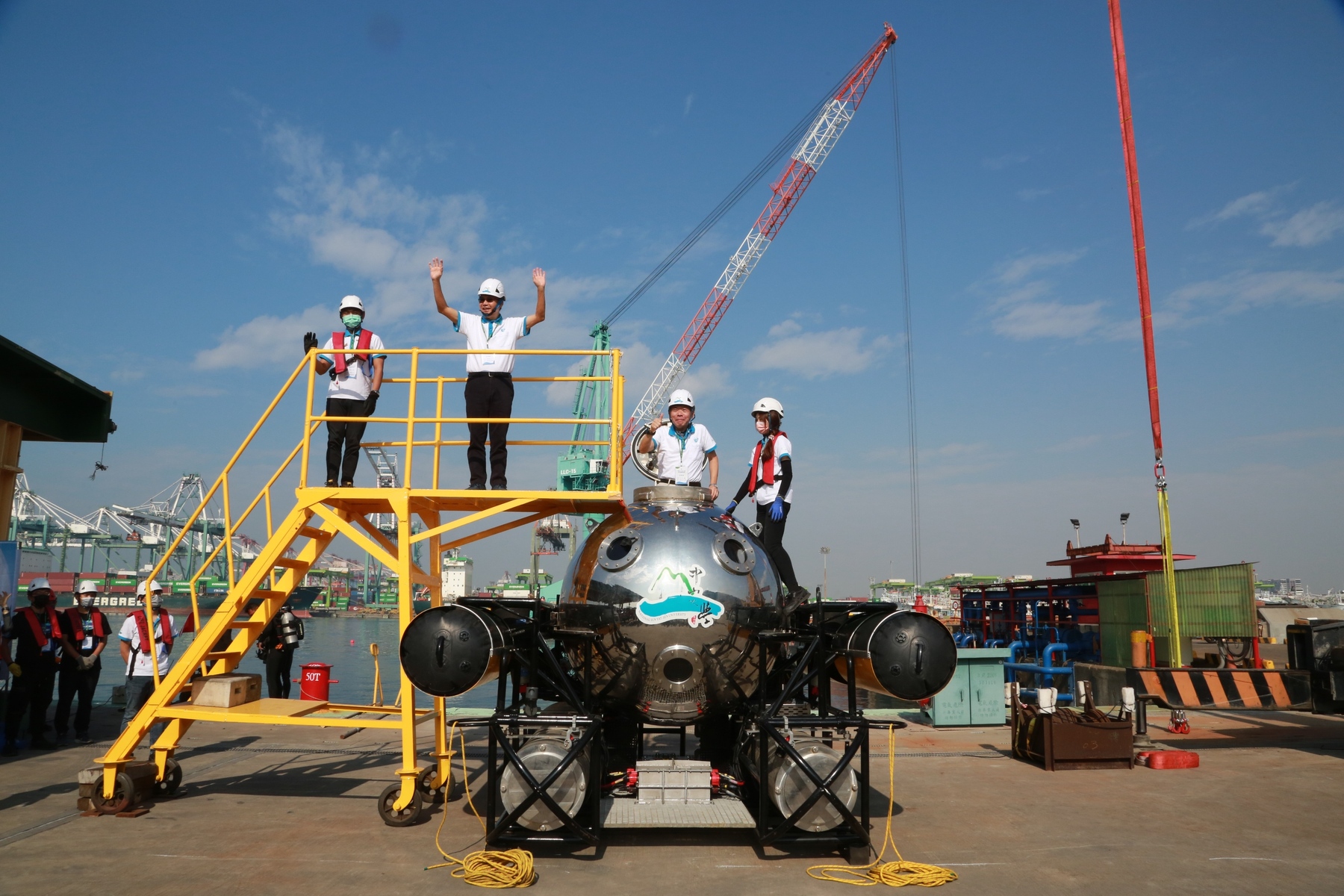
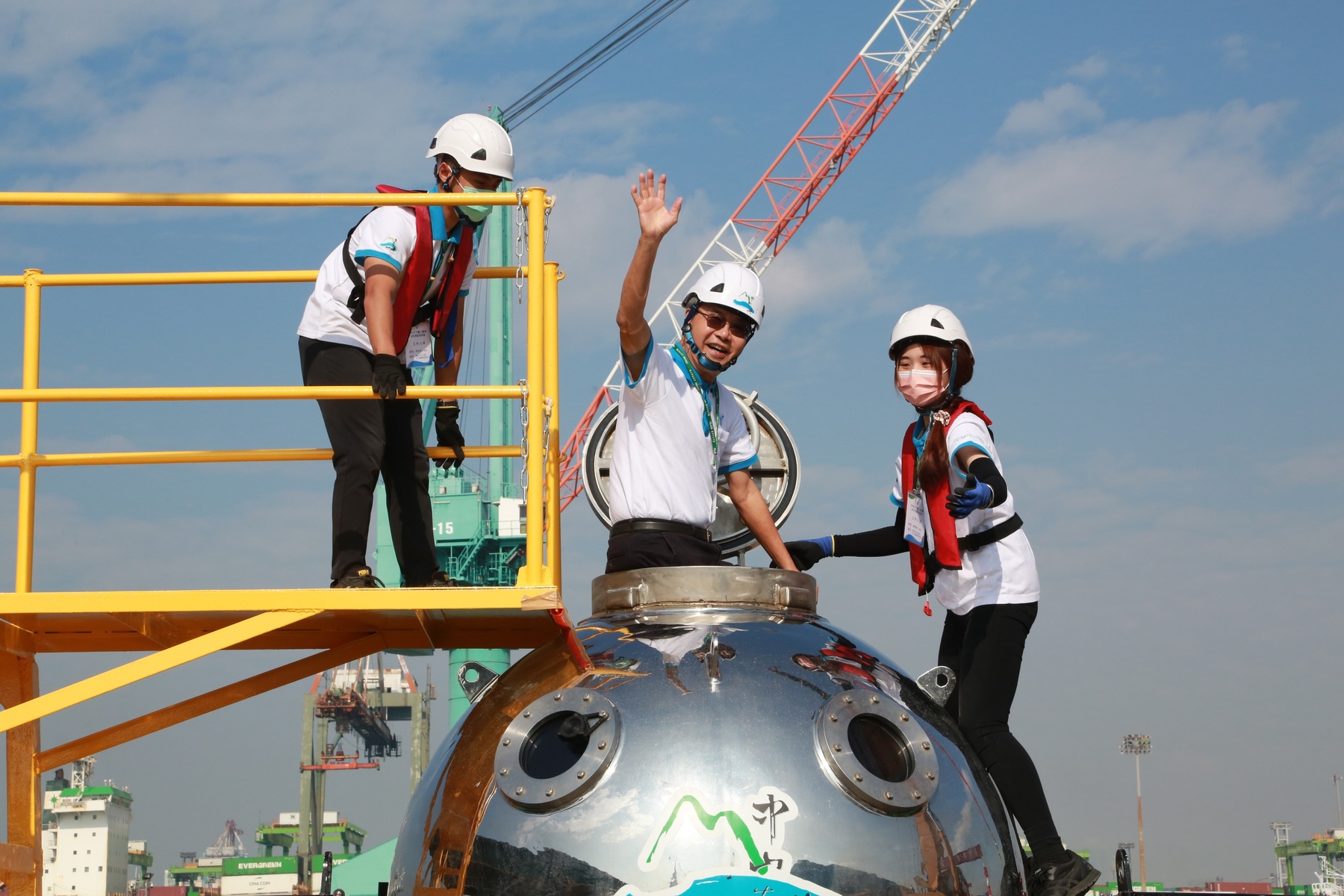
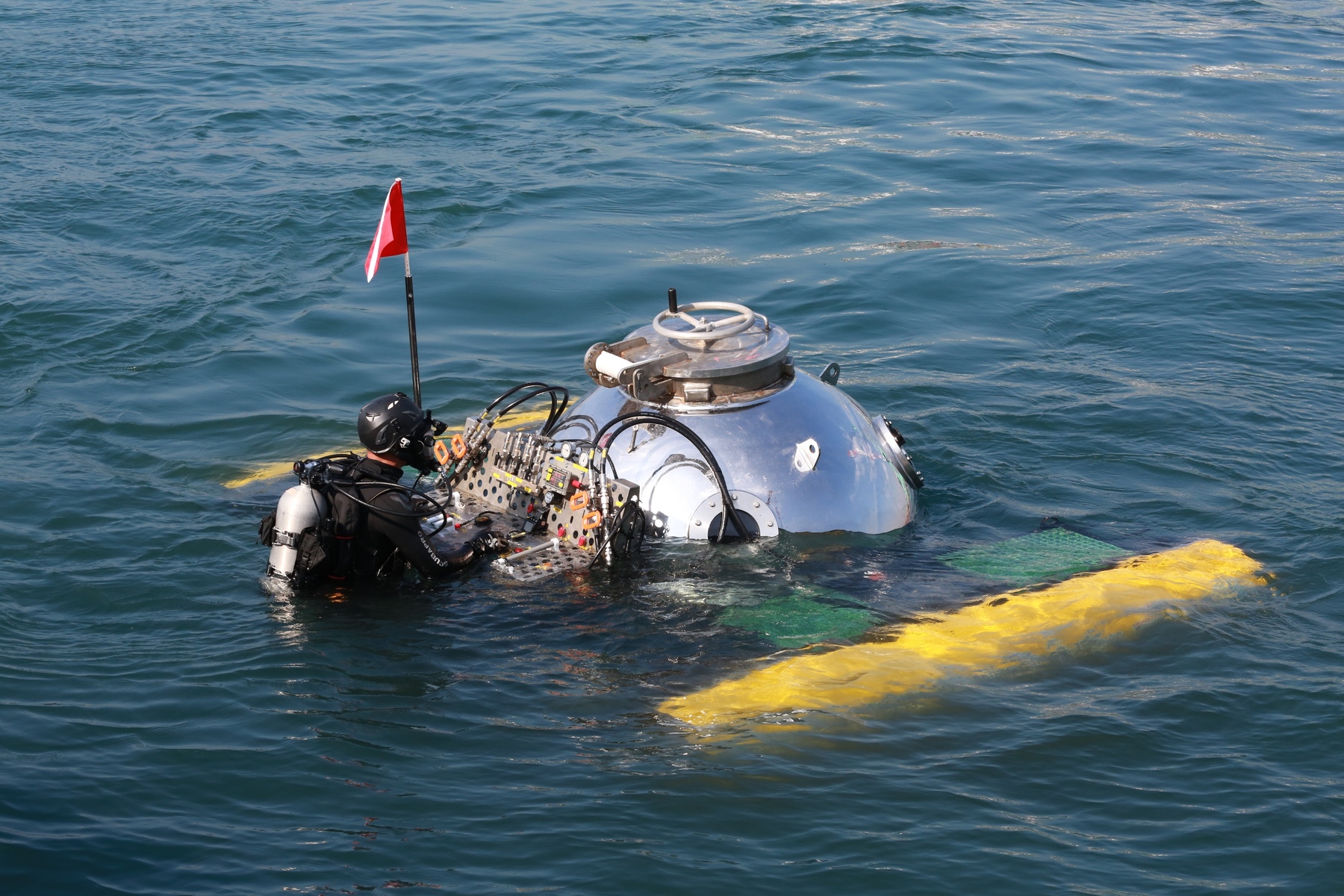
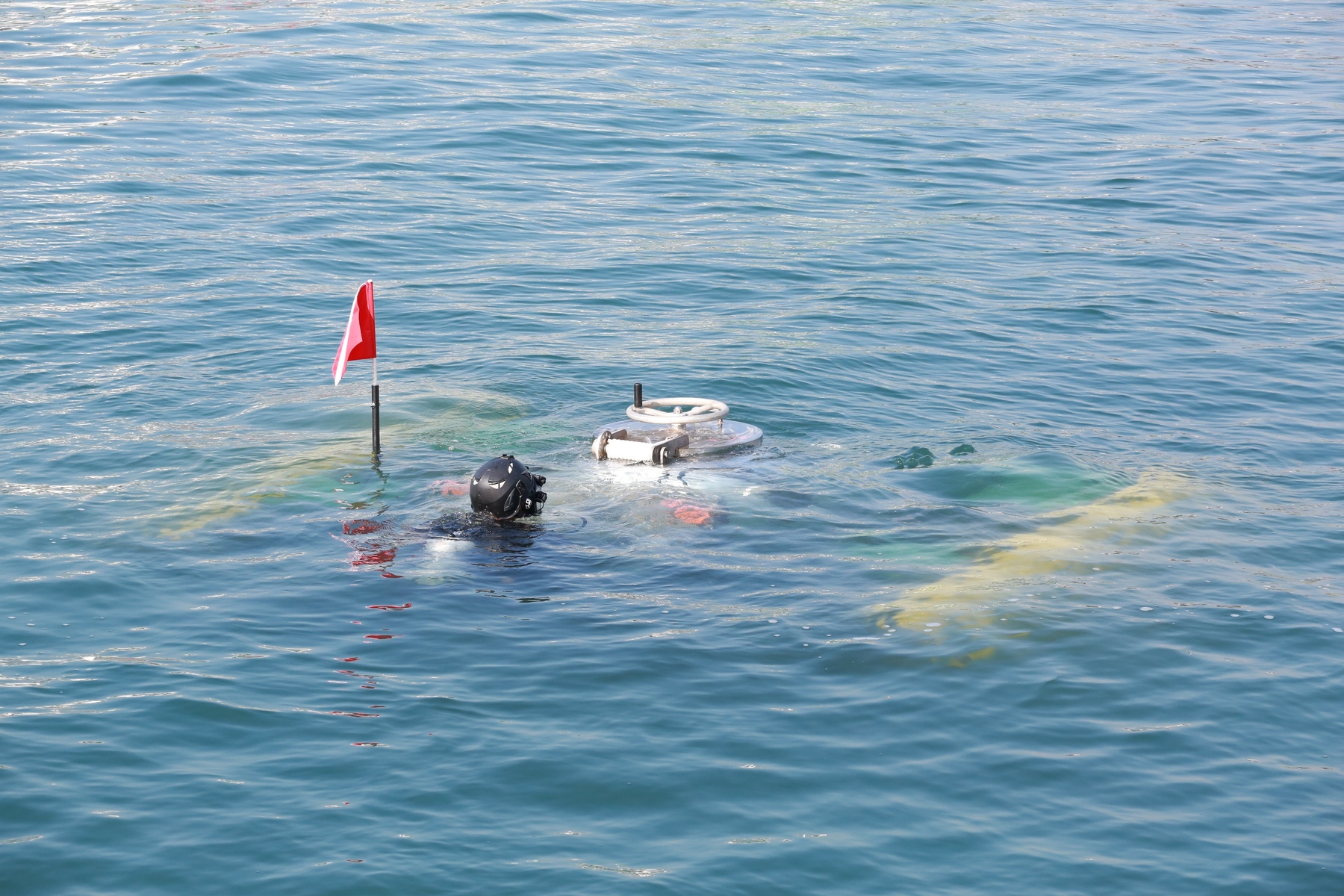
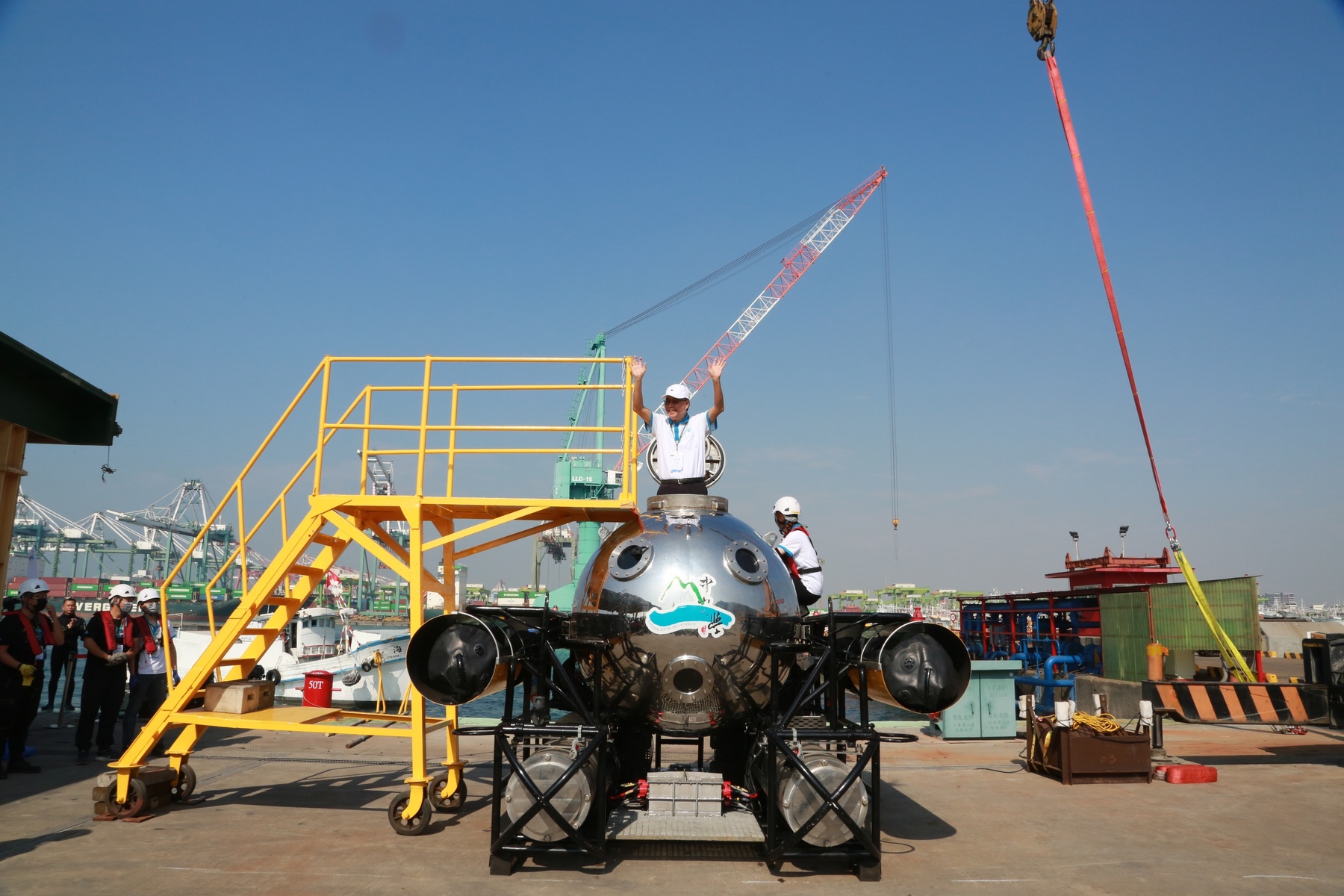
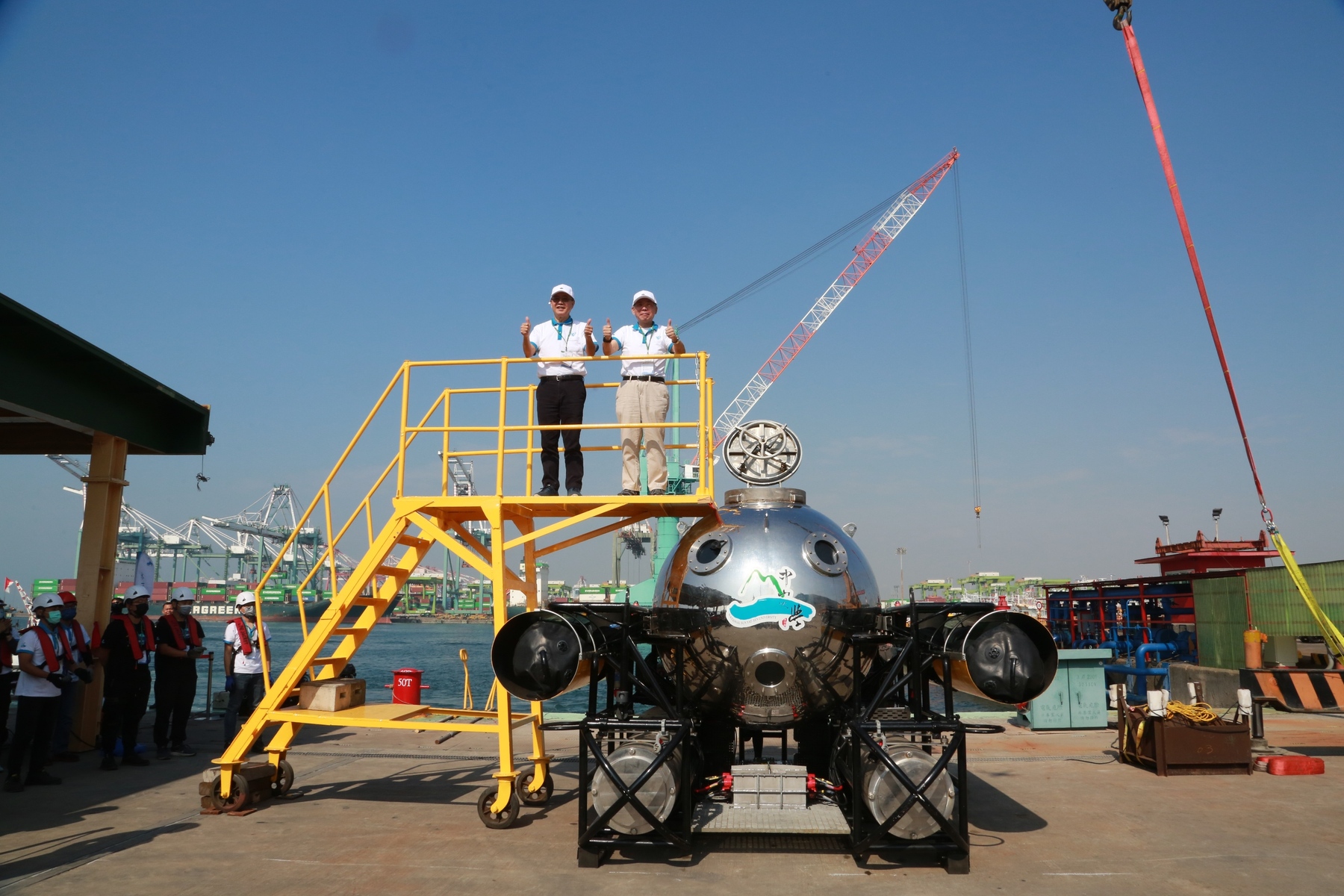
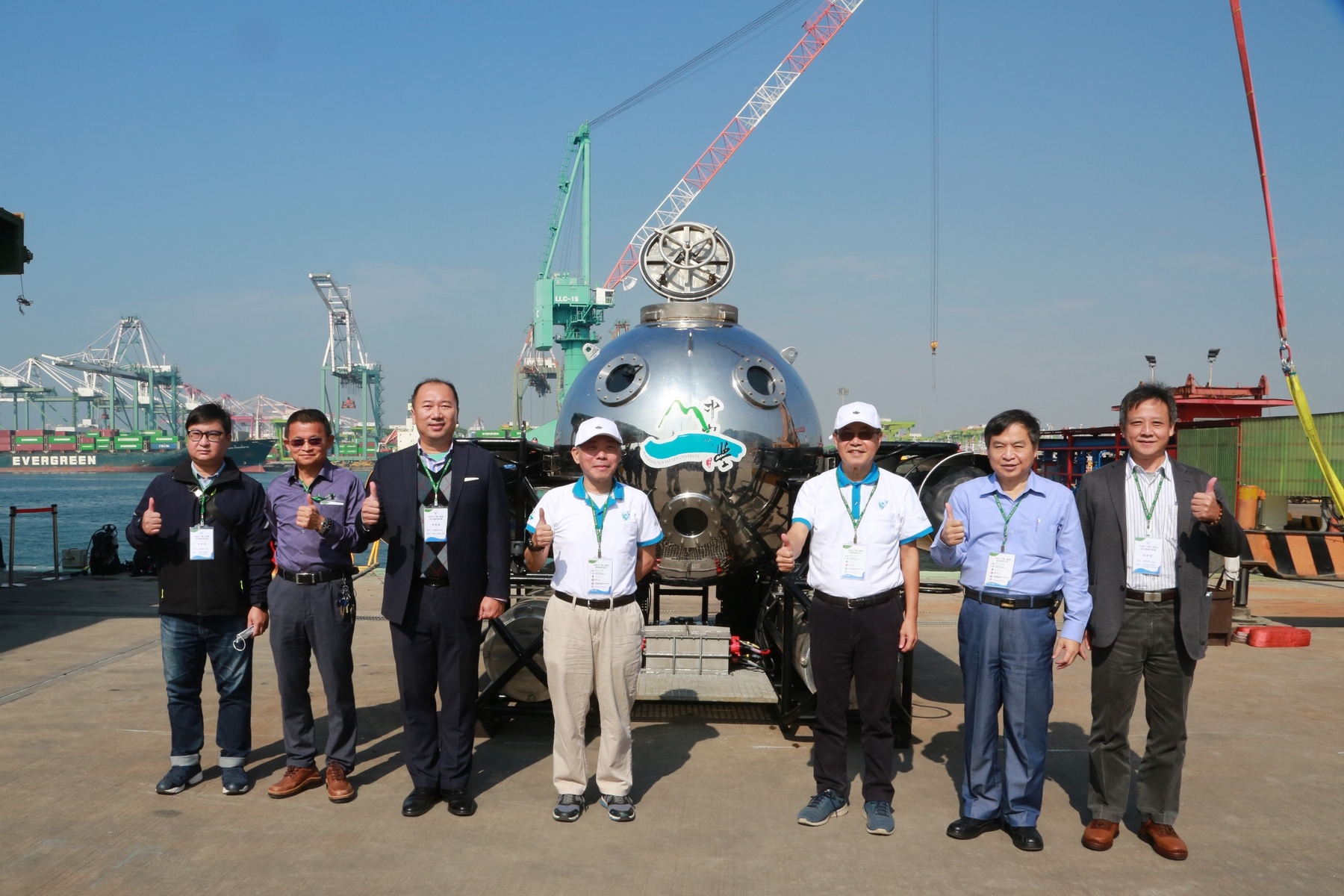
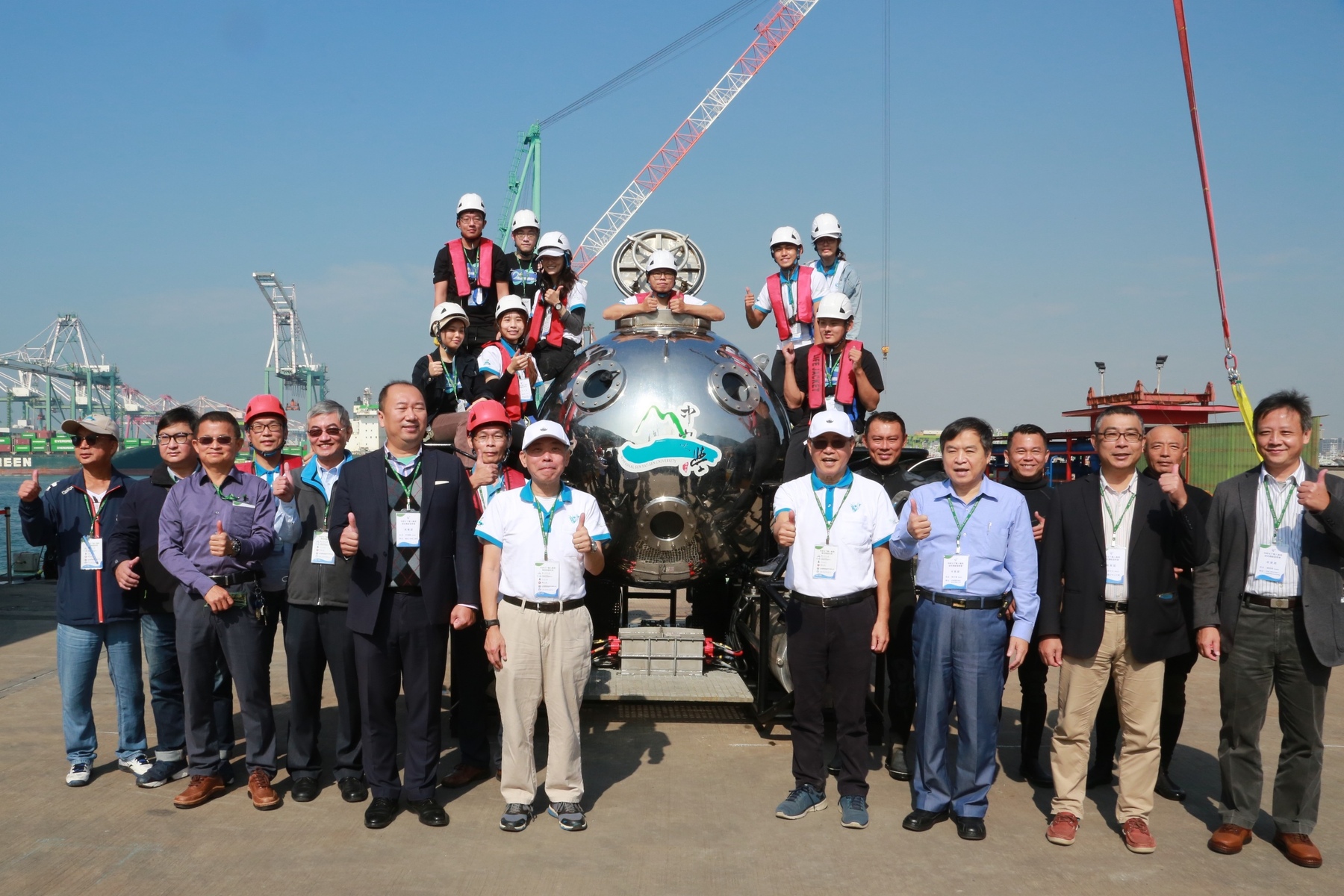
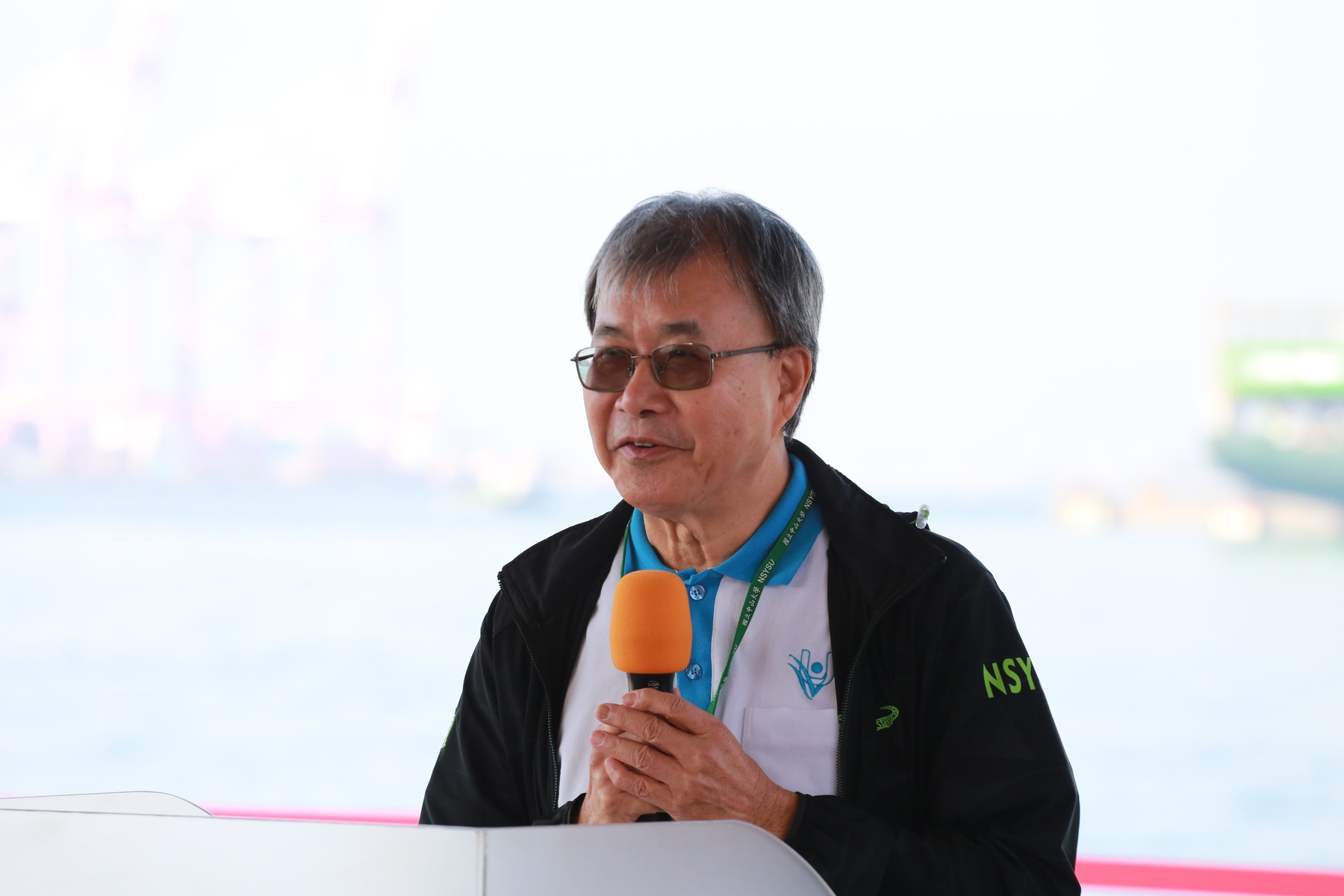
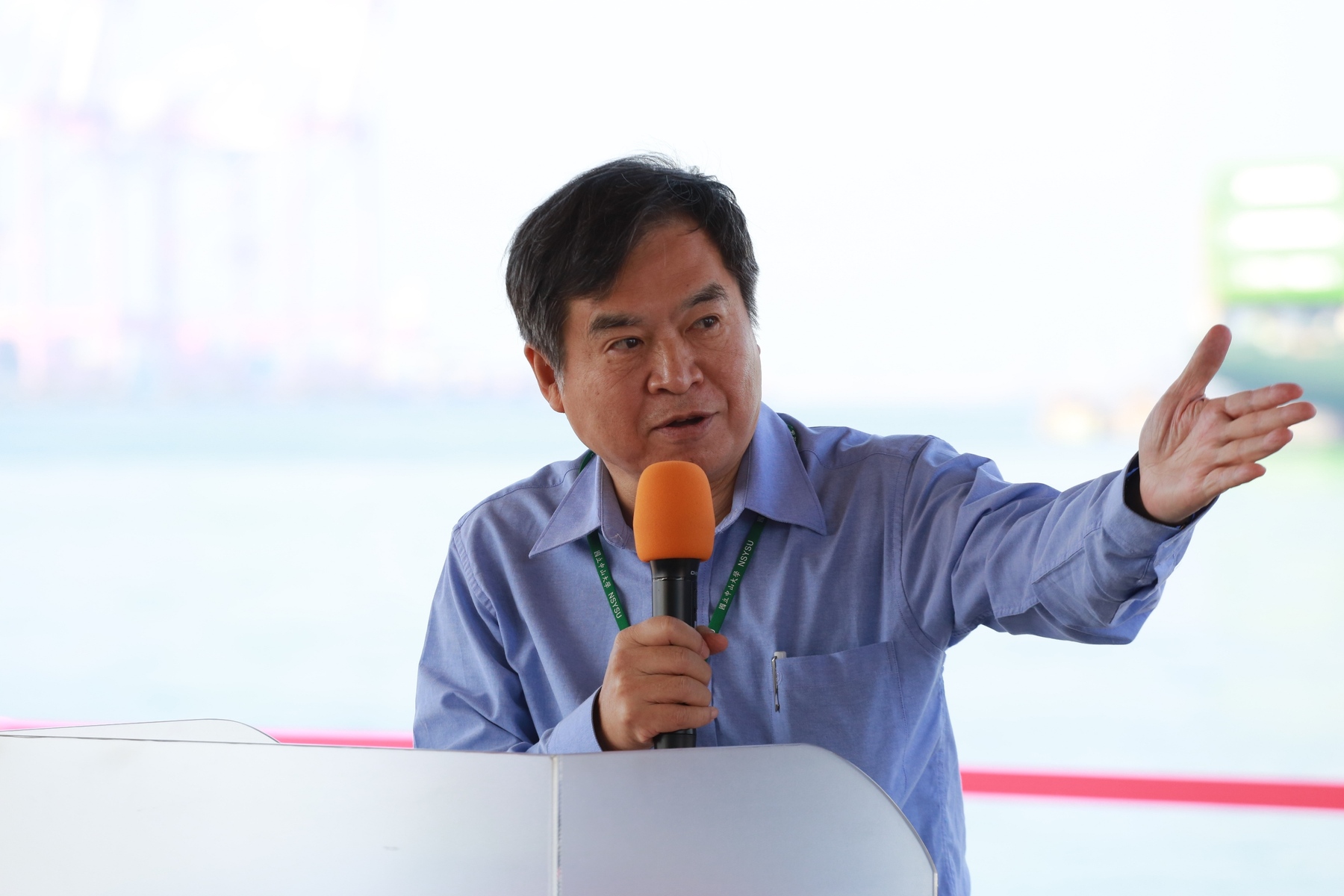
2023-01-02
Taiwan's first made-in-Taiwan mini submersible set a new record of 3 hours and 40 minutes of underwater cruise! The submersible was launched in the Liuqiu offshore area for an open sea trial this August. In the sea trial, the submersible carried two pilots in the cabin, and the internal manual control system in the submersible was tested for the first time. The submersible was successfully operated by a pilot in the cabin for nearly 2 hours. On December 15th, National Sun Yat-sen University held a press conference on "Scientific Research Manned Submersible" live demo at Taiwan International Shipbuilding Harbor (CSBC Corporation, Taiwan). NSYSU President Ying-Yao Cheng, and professor of the Institute of Undersea Technology and director of the Taiwan Ocean Research Institute (TORI/NARL) Chau-Chang Wang, entered the cabin and operated the submersible in person, which was witnessed together by the 6 major collaboration partners on site.
Ying-Yao Cheng said in his speech that NSYSU is the institution with the highest record of underwater sailing hours with two-pilot onboard for made-in-Taiwan submersibles, and there has always been a lack of relevant records in colleges, universities, and even industry. This is the first time that the submersible has been driven by an interior pilot for a long duration undersea, which is different from relying on an external scuba diver to control the submersible in the past. It means the life support system and the in-cabin control system are well-functioning, which is of great significance. Today’s event invites cooperation allies including the Taiwan Ocean Research Institute (TORI/NARL), National Defense University, Taiwan CSBC Corporation, Jong Shyn Shipbuilding Group, and Metal Industries Research & Development Centre to witness.
Referring to the sea trial at Liuqiu, NSYSU Vice President for Research & Development Chua-Chin Wang said that in June this year, the research team completed the first two-pilot life support system test close to the pier of Taiwan CSBC Corporation, which lasted 1 hour and 31 minutes underwater. This success gave the team the confidence to conduct open sea operations. The team selected a gently sloping area of the seafloor offshore Liuqiu to conduct a sea trial this August. Compared with the harbor testing, the open sea is an uncontrollable environment. Therefore, the team made a plan to conduct the sea trial safely. The test site must be chosen to avoid interferences from free diving, stand-up paddle, and offshore windsurfing activities in Liuqiu. The submersible must be driven at a water depth between 10 to 20 meters. Considering the rescue needs, the mother ship R/V Legend must stand by at a water depth of about 50 meters, whereas the command ship Vista 9 and the guard ship Haihuan are near the submersible for surveillance.
Chua-Chin Wang pointed out that after deducting the time of mother ship’s round-trip travel, there are only two precious days for the submersible’s sea trial. On the first day of the sea trial, without anyone in the cabin, the motion control functions of the submersible were successfully tested by a scuba diver. On the second day of the sea trial, two pilots, namely engineers, entered the cabin and the submersible was deployed from the R/V Legend and towed by the guard ship Haihuan for 30 minutes to the test site. The external diver first tested the motion control functions of the submersible and then handed over the control to the pilots inside the cabin. The sea trial sets a record in Taiwan that two pilots stayed in the cabin of a submersible for more than 3 hours and drove the submersible cruising the seafloor for nearly 2 hours.
Chau-Chang Wang said, after driving the submersible by himself, "I'm not excited but touched!" He described it as like a toddler letting go of his mother's hand, emphasizing that "this is an important breakthrough, which proves that the foreseen judgment and direction that we made are correct." Thanks to the cooperation of so many partners over the past five years, we have grown from scratch, and struggled many highs and lows, we have come to this point and successfully achieved the first goals. Everyone is so excited by these achievements.
The commander at the trail site and the director of NSYSU Institute of Undersea Technology Hsin-Hung Chen said that as a commander, he must always remind himself that safety is the top priority. A detailed operational plan has to be made and scrutinized before the sea trial. During the sea trial, the finalized operational plan has to be followed with caution. Meanwhile, the team also has to flexibly adjust the plan to address any unexpected events. Chen said that he felt tremendous pressure on his shoulders when the pilots were inside the cabin during the sea trial. Regarding human safety, conducting a submersible experiment at sea is a lot riskier than doing it at a harbor. The team must perform the tasks particularly with a conservative and cautious attitude. Chen said "The goal of handing over the control to the cabin was successfully achieved. I was finally relieved and was very touched."
Underwater Vehicle R&D Center, National Sun Yat-Sen University (briefed as UVRC/NSYSU) plans to conduct another sea trial in April next year. UVRC/NSYSU expects to operate the submersible in a deeper sea area for a longer duration before the retirement of this first prototype made-in-Taiwan submersible in 2023. Meanwhile, UVRC/NSYSU is also gearing up for the development of the second-generation made-in-Taiwan submersible.
Taiwan's first made-in-Taiwan mini submersible set a new record of 3 hours and 40 minutes of underwater cruise! The submersible was launched in the Liuqiu offshore area for an open sea trial this August. In the sea trial, the submersible carried two pilots in the cabin, and the internal manual control system in the submersible was tested for the first time. The submersible was successfully operated by a pilot in the cabin for nearly 2 hours. On December 15th, National Sun Yat-sen University held a press conference on "Scientific Research Manned Submersible" live demo at Taiwan International Shipbuilding Harbor (CSBC Corporation, Taiwan). NSYSU President Ying-Yao Cheng, and professor of the Institute of Undersea Technology and director of the Taiwan Ocean Research Institute (TORI/NARL) Chau-Chang Wang, entered the cabin and operated the submersible in person, which was witnessed together by the 6 major collaboration partners on site.
Ying-Yao Cheng said in his speech that NSYSU is the institution with the highest record of underwater sailing hours with two-pilot onboard for made-in-Taiwan submersibles, and there has always been a lack of relevant records in colleges, universities, and even industry. This is the first time that the submersible has been driven by an interior pilot for a long duration undersea, which is different from relying on an external scuba diver to control the submersible in the past. It means the life support system and the in-cabin control system are well-functioning, which is of great significance. Today’s event invites cooperation allies including the Taiwan Ocean Research Institute (TORI/NARL), National Defense University, Taiwan CSBC Corporation, Jong Shyn Shipbuilding Group, and Metal Industries Research & Development Centre to witness.
Referring to the sea trial at Liuqiu, NSYSU Vice President for Research & Development Chua-Chin Wang said that in June this year, the research team completed the first two-pilot life support system test close to the pier of Taiwan CSBC Corporation, which lasted 1 hour and 31 minutes underwater. This success gave the team the confidence to conduct open sea operations. The team selected a gently sloping area of the seafloor offshore Liuqiu to conduct a sea trial this August. Compared with the harbor testing, the open sea is an uncontrollable environment. Therefore, the team made a plan to conduct the sea trial safely. The test site must be chosen to avoid interferences from free diving, stand-up paddle, and offshore windsurfing activities in Liuqiu. The submersible must be driven at a water depth between 10 to 20 meters. Considering the rescue needs, the mother ship R/V Legend must stand by at a water depth of about 50 meters, whereas the command ship Vista 9 and the guard ship Haihuan are near the submersible for surveillance.
Chua-Chin Wang pointed out that after deducting the time of mother ship’s round-trip travel, there are only two precious days for the submersible’s sea trial. On the first day of the sea trial, without anyone in the cabin, the motion control functions of the submersible were successfully tested by a scuba diver. On the second day of the sea trial, two pilots, namely engineers, entered the cabin and the submersible was deployed from the R/V Legend and towed by the guard ship Haihuan for 30 minutes to the test site. The external diver first tested the motion control functions of the submersible and then handed over the control to the pilots inside the cabin. The sea trial sets a record in Taiwan that two pilots stayed in the cabin of a submersible for more than 3 hours and drove the submersible cruising the seafloor for nearly 2 hours.
Chau-Chang Wang said, after driving the submersible by himself, "I'm not excited but touched!" He described it as like a toddler letting go of his mother's hand, emphasizing that "this is an important breakthrough, which proves that the foreseen judgment and direction that we made are correct." Thanks to the cooperation of so many partners over the past five years, we have grown from scratch, and struggled many highs and lows, we have come to this point and successfully achieved the first goals. Everyone is so excited by these achievements.
The commander at the trail site and the director of NSYSU Institute of Undersea Technology Hsin-Hung Chen said that as a commander, he must always remind himself that safety is the top priority. A detailed operational plan has to be made and scrutinized before the sea trial. During the sea trial, the finalized operational plan has to be followed with caution. Meanwhile, the team also has to flexibly adjust the plan to address any unexpected events. Chen said that he felt tremendous pressure on his shoulders when the pilots were inside the cabin during the sea trial. Regarding human safety, conducting a submersible experiment at sea is a lot riskier than doing it at a harbor. The team must perform the tasks particularly with a conservative and cautious attitude. Chen said "The goal of handing over the control to the cabin was successfully achieved. I was finally relieved and was very touched."
Underwater Vehicle R&D Center, National Sun Yat-Sen University (briefed as UVRC/NSYSU) plans to conduct another sea trial in April next year. UVRC/NSYSU expects to operate the submersible in a deeper sea area for a longer duration before the retirement of this first prototype made-in-Taiwan submersible in 2023. Meanwhile, UVRC/NSYSU is also gearing up for the development of the second-generation made-in-Taiwan submersible.
Click Num:
Share
